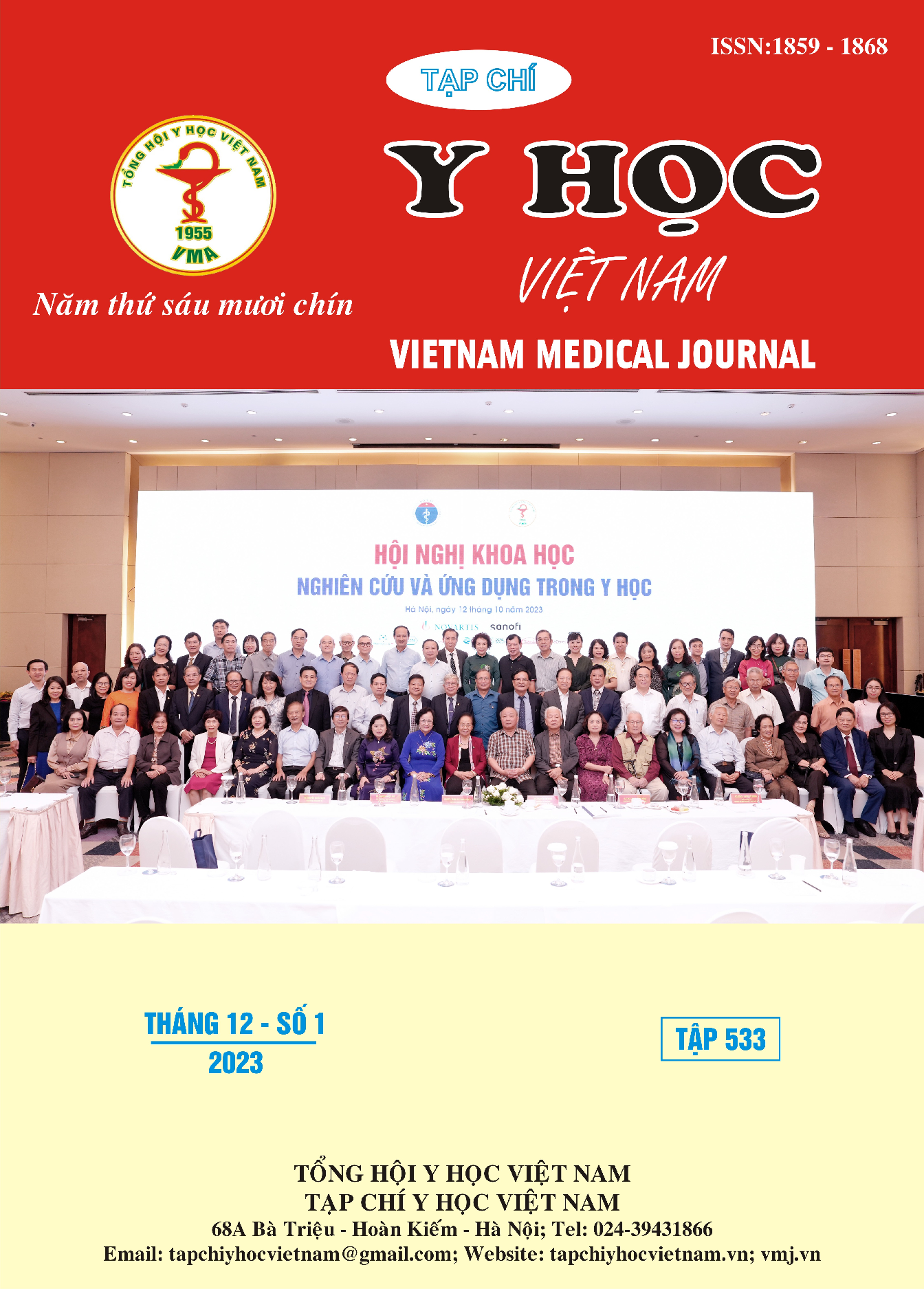EVALUATION OF THE RESULT OF INTRACRANIAL ANEURYSM MICROSURGICAL TREATMENT BY CLIPPING
Main Article Content
Abstract
Objective: To describe of clinical features, imaging finding and evaluate the results of intracranial aneurysm microsurgical treatment by clipping. Methods: Prospective described study of 31 cases of cranial aneurysm indicated to surgical treatment at Neurosurgery Department – Thái Nguyên national hospital from 9/2019 to 10/2022. Results: The outcome at the time discharged from hospital, 77,4% had good recovery (GOS 4-5), 9,7% had moderate outcome (GOS 3) and 9,7% had bad outcome (GOS 2), 1 patients died (3,2%). The proportion of better recovery after 3 months was 36,7%, and1 patient died at home. Checked CTA after surgery, 97,4% of aneurysm was completely removed. Conclusions: The proportion of ruptured intracranial aneurysm is very low, but the outcome is often bad. Nowadays, there are many method treatment for intracranial aneurism, but microsurgical treatment still remains its important roles and is improvement for better outcome.
Article Details
Keywords
intracranial aneurysm, microsurgical treatment by clipping
References
2. Đặng Việt Sơn (2019), Đặc điểm lâm sàng, chẩn đoán hình ảnh và kết quả điều trị phẫu thuật vỡ túi phình động mạch cảnh trong đoạn trong sọ, Luận án Tiến sỹ, Đại học y Hà Nội, Hà Nội.
3. Nguyễn Sơn (2010), Nghiên cứu lâm sàng, chẩn đoán hình ảnh và điều trị vi phẫu thuật kẹp túi phình động mạch não trên lều đã vỡ, Luận án Tiến sỹ y học, Học viện Quân Y.
4. Võ Bá Tường (2020), "Đánh giá kết quả điều trị phình động mạch não bằng phẫu thuật kẹp clip vi phẫu", Tạp Chí Y Học Lâm Sàng. Số 59/2020, tr. 11-19.
5. N. Etminan et al (2019), "Worldwide Incidence of Aneurysmal Subarachnoid Hemorrhage According to Region, Time Period, Blood Pressure, and Smoking Prevalence in the Population: A Systematic Review and Meta-analysis", JAMA Neurol. 76(5), tr. 588-597.
6. N. Etminan et al (2022), "European Stroke Organisation (ESO) guidelines on management of unruptured intracranial aneurysms", Eur Stroke J. 7(3), tr. V.
7. B. N. Jaja et al (2015), "Prognostic value of premorbid hypertension and neurological status in aneurysmal subarachnoid hemorrhage: pooled analyses of individual patient data in the SAHIT repository", J Neurosurg. 122(3), tr. 644-52.
8. M. Pegoli et al (2015), "Predictors of excellent functional outcome in aneurysmal subarachnoid hemorrhage", J Neurosurg. 122(2), tr. 414-8.
9. Edoardo Picetti et al (2022), "Early management of patients with aneurysmal subarachnoid hemorrhage in a hospital with neurosurgical/neuroendovascular facilities: a consensus and clinical recommendations of the Italian Society of Anesthesia and Intensive Care (SIAARTI)—part 2", Journal of Anesthesia, Analgesia and Critical Care. 2(1), tr. 21.


